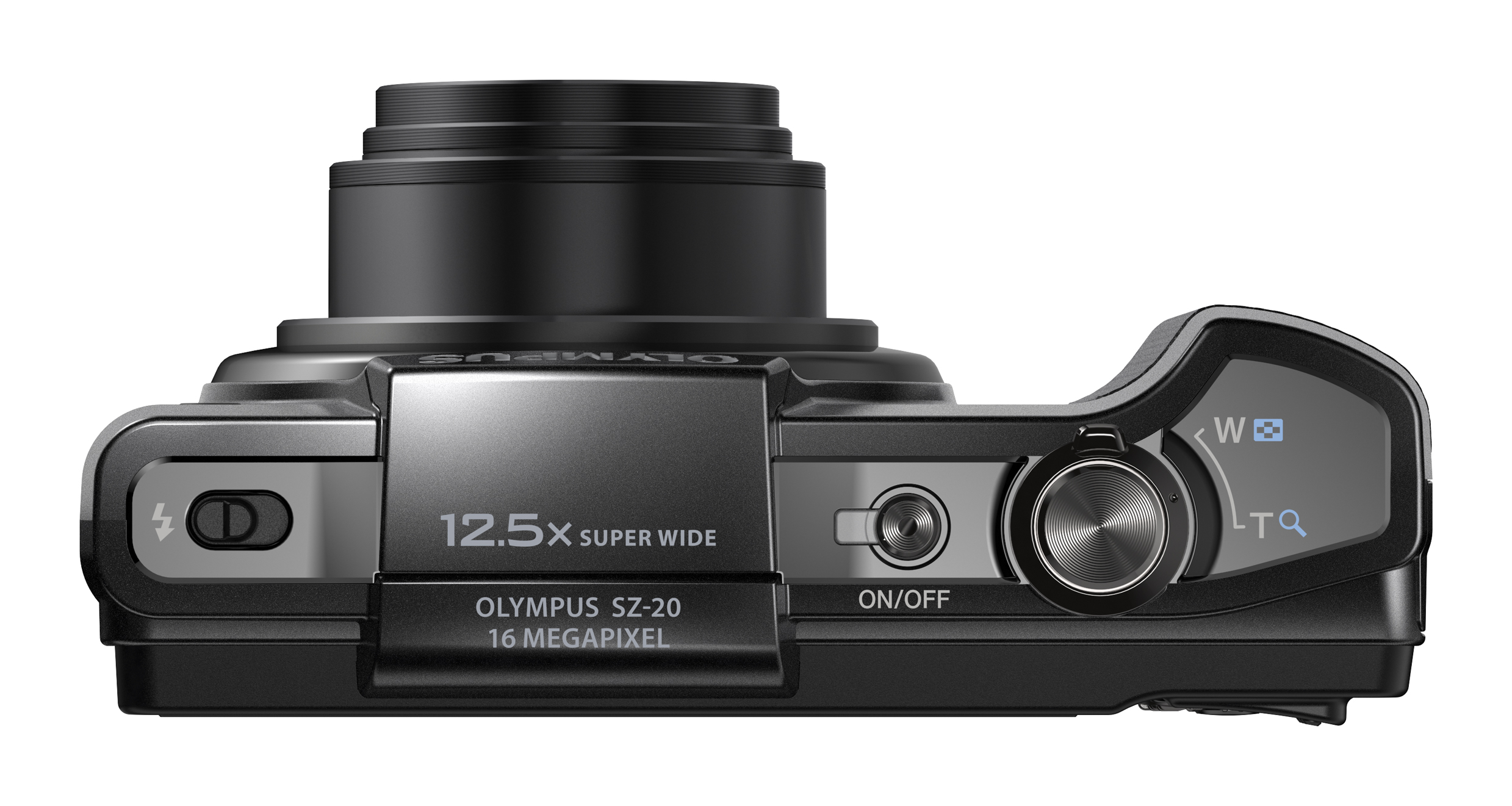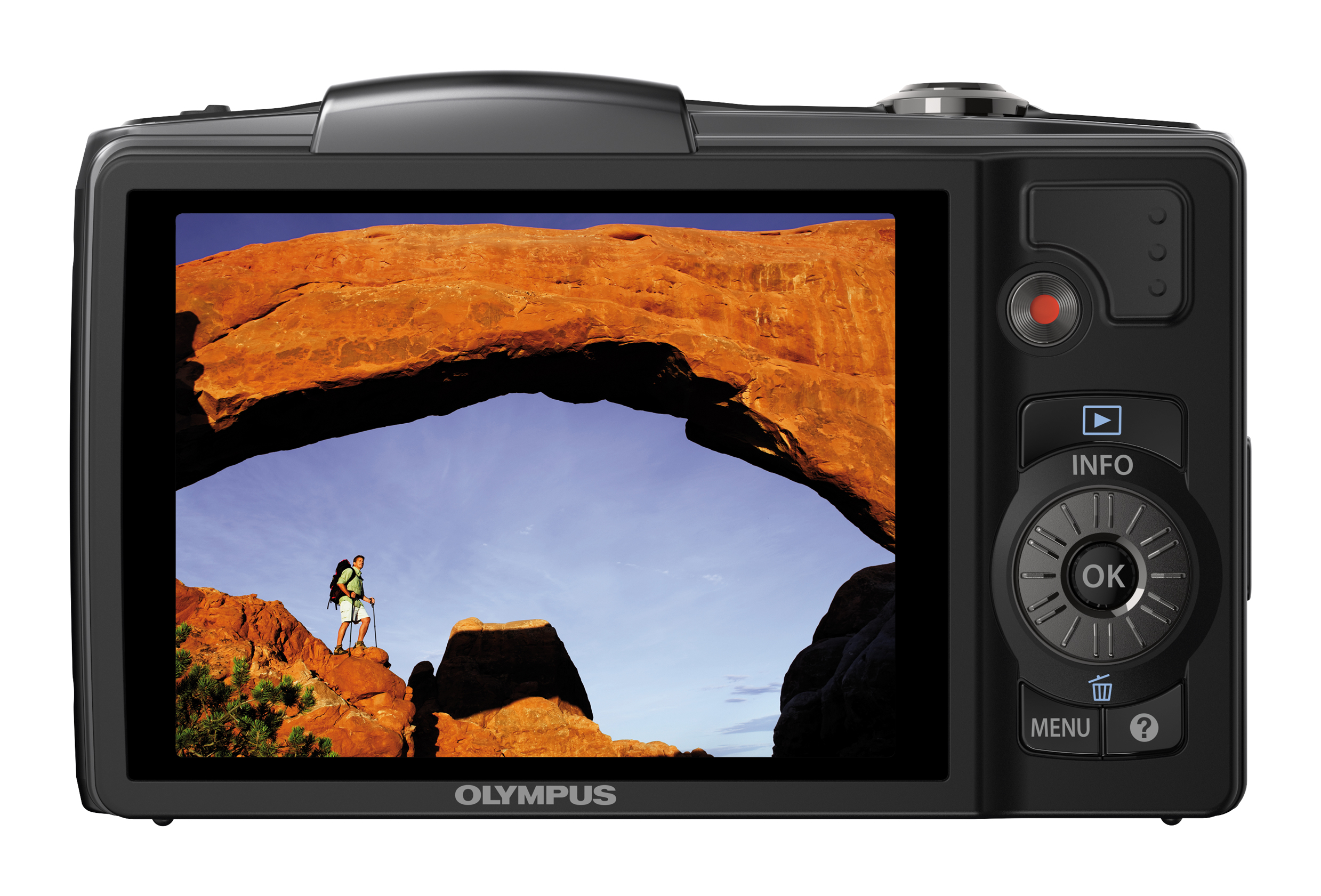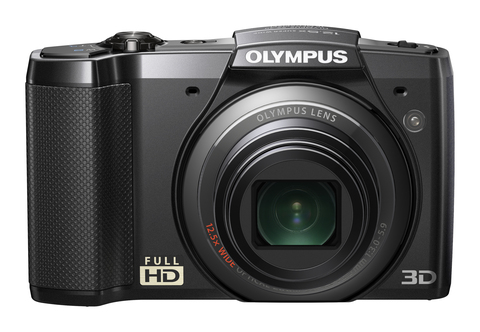Why you can trust TechRadar
Prescribed with the mantle of 'super-zoom' many may have expected a larger, chunkier specimen, but as the compact's zoom ability is 'only' 12.5x it certainly isn't the heavyweight contender of its class and as such is presented in a much lighter, more compact frame.
However it is still a touch chubbier than the average point-and-shoot and as such offers a heightened sense of durability, although as with most compacts the hinges on the battery and HDMI/USB compartments feel fragile to the boisterous touch.
The SZ-20's slightly larger demeanour can be attributed to its super-zoom lens and the fact a handy grip is wedged on the end to aid comfort whilst framing and shooting. On the rear, there's also a thumb pad for improved stability.
Elsewhere Olympus delivers a simple array of buttons, keeping a handful of the usual suspects on board, but opting mainly for an on-screen command route. This may impress minimalists, but ultimately means that there is no direct access for activating the most sought-after and useful measures such as: macro mode, exposure compensation or self timer.
A dedicated control for movie capture is reserved next to the 3" LCD, as is the command dial-come-d-pad, plus: OK, playback, menu and help buttons.
On the top of the SZ-20 we find the activation button, zoom controls and the pop-up flash with its own lever offering direct access for controlling lighting.

The on-screen menu follows Olympus' tried and tested design with photographers able to scroll across the assortment of shooting modes in the top right corner of the monitor and then alter values for each from the dedicated drop down menus, such as: white balance, self timer and ISO, etc or select further options from the shooting mode's sub menu – for example in 'Scene Mode' users can then select the appropriate scene. For those seeking advanced control the unit provides a Program option, whereas beginners have a few options to investigate including 16 scene modes and iAuto, finally creative enthusiasts have the range of magic filters to explore, plus 3D and Panorama mode. Utilising the camera's menu is incredibly simplistic and as the camera also provides on-screen advice and explanations of the controls, not only will the eager novice find shooting with the SZ-20 a breeze, but they will possibly learn quite a few photography related principles compared to with the average low-end, point-and-shoots.
Sign up for breaking news, reviews, opinion, top tech deals, and more.
Starting up the camera takes several seconds, yet what is perhaps most disappointing is that the refresh rate between frames in single shot mode can last up to four seconds, with other modes such as panorama, hand-held starlight mode, beauty mode, and high continuous shooting mode taking even longer to process – thus this may not be an appropriate choice for shutter-happy shooters.
Framing and composition was made relatively simple as the LCD screen did well to deliver a clear image in most conditions and for the majority of angles and positions – what's more there is an option to control brightness (plus and minus two levels) which came in very handy when shooting in harsh sunlight. The only problem that we did discover with image representation on the LCD was when using a handful of the magic filters and creative modes – such as Watercolour for example. In this mode the capture is presented with little to no definition and fails to promote the gamut of colours which was actually achieved and could later be seen when uploaded onto a computer. Likewise the 3D mode can be quite tricky to utilise as the lack of strong definition of detail means lining up the transfer image can be quite a challenge and almost impossible on subjects exhibiting a great mass of smaller details such as trees and flower beds or anything that is moving. The same can also be said for the drawing mode – with only stationary or slow-moving subjects appearing as faint outlines against an overpowering white canvas.

Shooting in the high-speed continuous mode was less exciting than anticipated as we managed to claim the 15 fps advertised at 5MP but were actually only able to record 3fps at full resolution. Battery life was not as impressive as we had hoped either: capturing just over 200 shots on a full charge, whereas most compacts of this calibre are capable of at least one hundred more.
Current page: Olympus SZ-20 Review: Build and handling
Prev Page Olympus SZ-20 Review: Overview Next Page Olympus SZ-20 Review: Performance